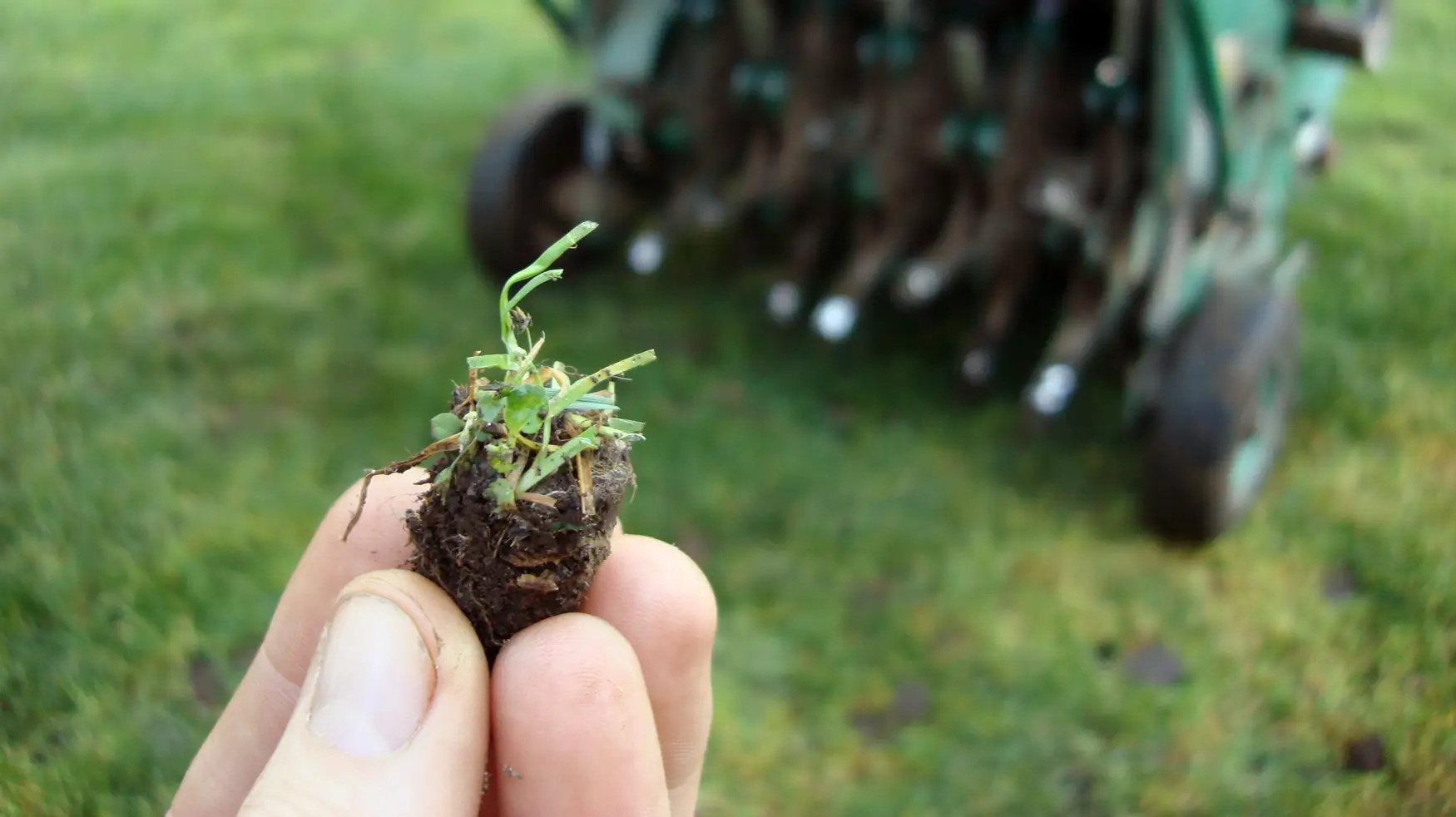Achieving and maintaining a lush, vibrant lawn requires more than just regular mowing and watering. One often-overlooked but essential practice for a healthy lawn is aeration. In this comprehensive guide, we will explore the significance of aeration in lawn care, delving into why it’s beneficial and how it can be seamlessly paired with overseeding for optimal results.
Understanding Aeration: What is it and Why Does it Matter?
Aeration is the process of perforating the soil with small holes to allow air, water, and nutrients to penetrate the grassroots. Over time, soil can become compacted due to factors such as heavy foot traffic, machinery use, or even the natural settling of the soil. Compacted soil restricts the movement of air and water, hindering the overall health of the grass.
Benefits of Aeration:
- Improved Soil Structure: Aeration promotes better soil structure by preventing compaction. This allows the grassroots to expand more easily, promoting healthy growth.
- Enhanced Nutrient Absorption: When the soil is compacted, nutrients struggle to reach the grassroots. Aeration opens up channels for nutrients to move freely through the soil, ensuring that your grass receives the essential elements it needs.
- Increased Oxygen Flow: Grass roots, like any other plant, require oxygen for respiration. Compacted soil limits the flow of oxygen to the roots, leading to shallow root systems. Aeration improves oxygen circulation, encouraging deeper and more robust root development.
- Enhanced Water Infiltration: Compacted soil is less permeable, leading to poor water absorption. Aeration facilitates better water infiltration, reducing the risk of runoff and ensuring that your lawn receives the water it needs to thrive.
- Reduction of Thatch: Thatch, a layer of dead grass and organic matter, can accumulate on the soil’s surface. Excessive thatch prevents water and nutrients from reaching the grassroots. Aeration helps break down thatch, promoting a healthier lawn.
When is the Best Time to Aerate Your Lawn?
The timing of aeration is crucial for maximum effectiveness. The ideal time to aerate your lawn depends on the grass type and the climate of your region. For cool-season grasses common in Columbus, Ohio, such as Kentucky Bluegrass and Fine Fescue, the best time to aerate is during the early fall or late spring.
Why Fall or Spring?
- Fall Aeration: Conducting aeration in the fall allows the grassroots to take advantage of favorable growing conditions. The soil is still warm, promoting root development, while the cooler air temperatures reduce stress on the grass.
- Spring Aeration: Aeration in late spring prepares the lawn for the growing season ahead. This timing facilitates nutrient absorption, as the grass is actively entering a phase of growth.
Pairing Aeration with Overseeding: Maximizing Lawn Potential
While aeration alone provides substantial benefits to your lawn, combining it with overseeding takes your lawn care efforts to the next level. Overseeding involves spreading grass seed over an existing lawn, filling in bare spots, and introducing new, resilient grass varieties.
The Synergy of Aeration and Overseeding:
- Improved Seed-to-Soil Contact: Aeration creates pockets in the soil, providing an ideal environment for grass seeds to settle. This improves seed-to-soil contact, increasing the chances of successful germination.
- Optimal Nutrient Absorption: With the soil channels opened up through aeration, the freshly applied seeds have direct access to the nutrients in the soil. This promotes strong and healthy seedling development.
- Enhanced Germination: Aeration enhances the conditions for seed germination by ensuring that air, water, and nutrients reach the grassroots effectively. This results in a thicker, more resilient lawn.
- Repairing Bare Patches: Aeration paired with overseeding is an effective strategy for repairing bare patches or areas with thin grass coverage. The new seeds fill in these spaces, creating a uniform and aesthetically pleasing lawn.
DIY Aeration vs. Professional Services: Making the Right Choice
Aeration can be done through various methods, including spike aerators, plug aerators, and liquid aerating solutions. While some homeowners may opt for a do-it-yourself approach, professional lawn care services, like Mastergreen Lawncare, offer specialized equipment and expertise for optimal results.
DIY Aeration:
- Affordability: DIY aeration can be cost-effective, especially for small lawns.
- Convenience: Homeowners can aerate their lawns at their convenience, adapting to their schedules.
Professional Aeration Services:
- Specialized Equipment: Professional services utilize advanced aerating equipment, ensuring a more thorough and effective process.
- Expertise: Lawn care professionals have the knowledge to determine the best aeration technique for your specific grass type and soil condition.
- Time Savings: For larger lawns or busy homeowners, professional services save time and effort, providing a hassle-free solution.
Tips for Successful Aeration and Overseeding
Whether you choose the DIY route or enlist professional services, certain tips can enhance the success of your aeration and overseeding efforts:
- Mow Before Aeration: Trim your grass slightly shorter than usual before aeration to allow better access to the soil.
- Water the Lawn: Ensure that the soil is adequately moist before aeration and overseeding. This facilitates the penetration of the aerator and promotes seed germination.
- Choose the Right Seed: Select grass seed varieties that are well-suited to your region and lawn conditions.
- Follow Proper Seed Rate: Pay attention to the recommended seeding rates to avoid over-seeding or under-seeding.
- Fertilize After Aeration: Applying fertilizer after aeration and overseeding provides the necessary nutrients for the new grass to thrive.
- Avoid Heavy Foot Traffic: Minimize foot traffic on the freshly aerated and seeded lawn to allow for undisturbed germination and establishment.
Conclusion
Aeration is the unsung hero of a healthy lawn, addressing issues beneath the surface to promote lush, resilient grass. When paired with overseeding, the benefits multiply, resulting in a vibrant and thriving lawn. Whether you choose to tackle this task yourself or enlist the help of professionals, the investment in aeration and overseeding pays off in the form of a beautiful, sustainable lawn that enhances the overall appeal of your property.
